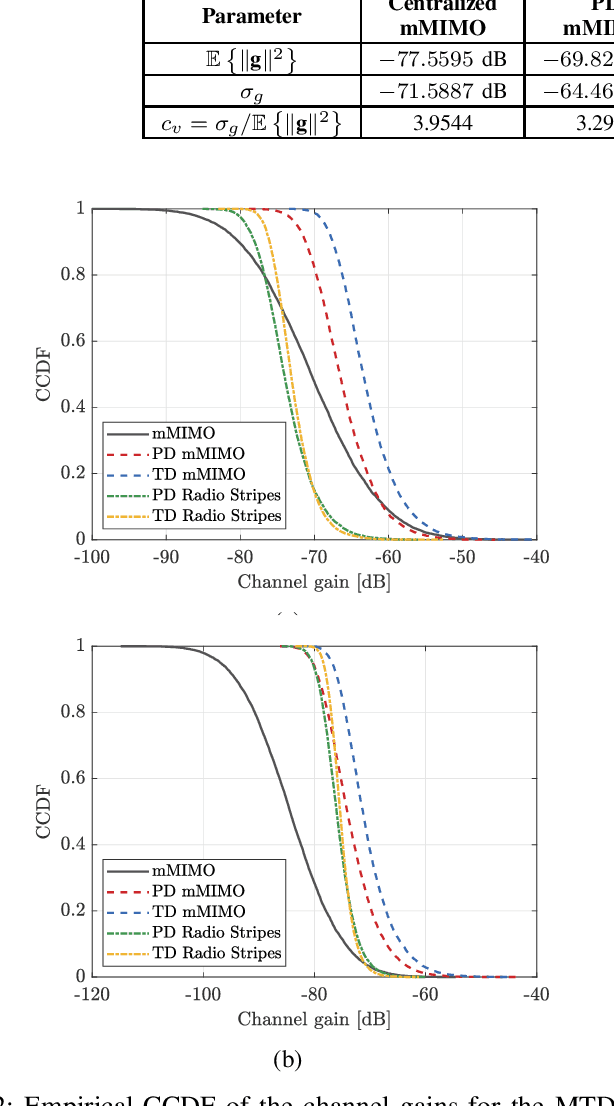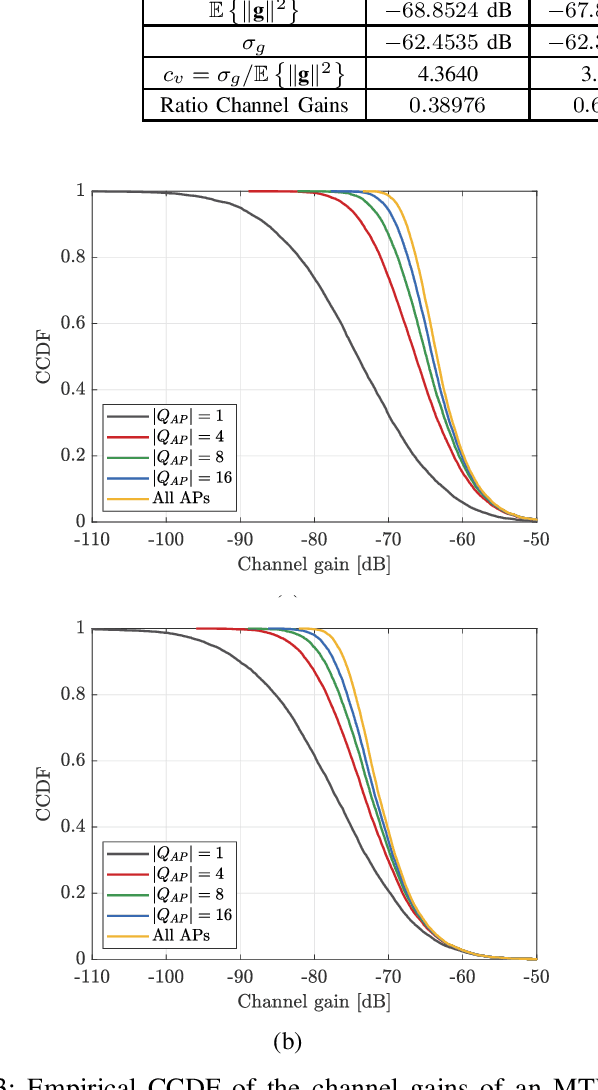Statistical Analysis of Received Signal Strength in Industrial IoT Distributed Massive MIMO Systems
Paper and Code
May 02, 2022



The Fifth Generation (5G) of wireless networks introduced native support for Machine-Type Communication (MTC), which is a key enabler for the Internet of Things (IoT) revolution. Current 5G standards are not yet capable of fully satisfying the requirements of critical MTC (cMTC) and massive MTC (mMTC) use cases. This is the main reason why industry and academia have already started working on technical solutions for beyond-5G and Sixth Generation (6G) networks. One technological solution that has been extensively studied is the combination of network densification, massive Multiple-Input Multiple-Output (mMIMO) systems and user-centric design, which is known as distributed mMIMO or Cell-Free (CF) mMIMO. Under this new paradigm, there are no longer cell boundaries: all the Access Points (APs) on the network cooperate to jointly serve all the devices. In this paper, we compare the performance of traditional mMIMO and different distributed mMIMO setups, and quantify the macro diversity and signal spatial diversity performance they provide. Aiming at the uplink in industrial indoor scenarios, we adopt a path loss model based on real measurement campaigns. Monte Carlo simulation results show that the grid deployment of APs provide higher average channel gains, but radio stripes deployments provide lower variability of the received signal strength.
 Add to Chrome
Add to Chrome Add to Firefox
Add to Firefox Add to Edge
Add to Edge